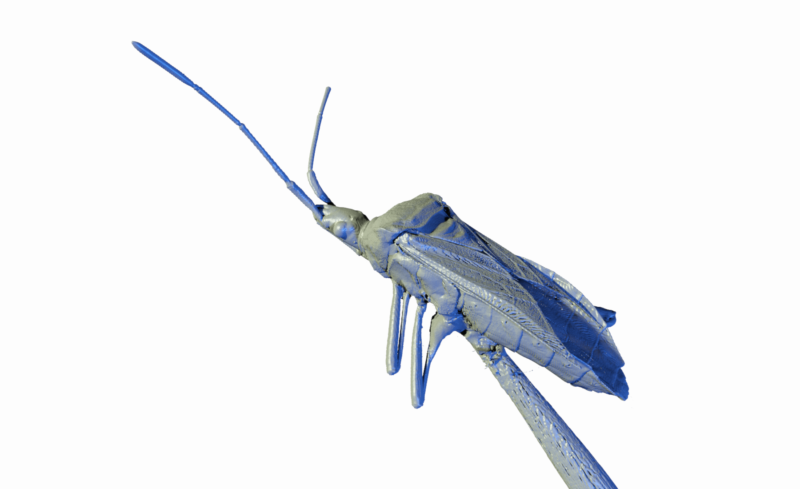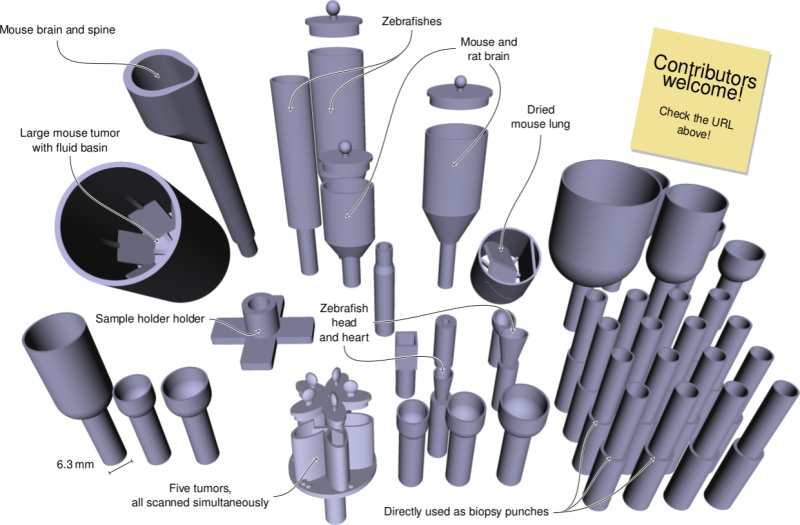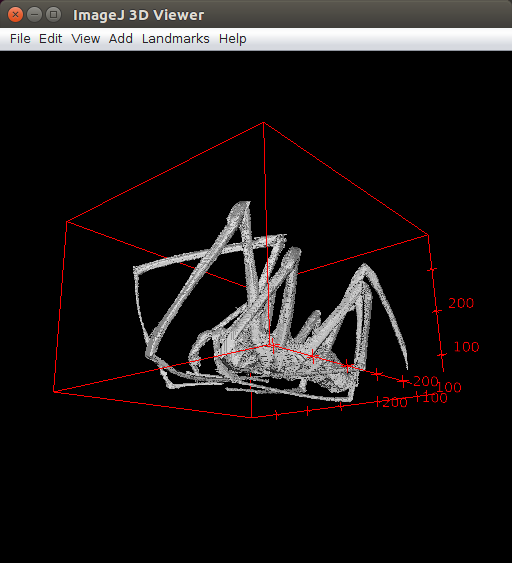08 Nov 2018

For the so-called future day we had some kids visiting our lab.
To show them what can be done with a microCT, we imaged a long-horned beetle (probably, I’m no Entomologist, the bug guide helped me with classifying at least the family).
The beetle was killed in a light iodine solution and stored in 70 % alcohol for a while.
We then super-glued it to a toothpick, and mounted it on our toothpick adapter for scanning (and showing it to the kids).
It was scanned on a SkyScan 1272 with a source voltage of 50 kV, a source current of 200 µA with camera and geometry settings leading to an isotropic voxel size of 10.8 µm, the scan took about 90 minutes.
Without the antennae, the beetle has a length of approximately 17 mm.
The data set was visualized in MeVisLab with the MeVis Path Tracer feature.
24 Jul 2018

A wasp died in our living room.
We dried it and scanned it on a SkyScan 1272 with a source voltage of 50 kV, a source current of 200 µA with camera and geometry settings leading to an isotropic voxel size of 15 µm, the scan took about 18 minutes.
The hind part of the body has an approximate width of 4 mm, the head is approximately 3 mm wide.
The data set was visualized in ImageVis3D and exported to a set of images while the wasp rotates.
The movie shown above was made exactly like the one for the rat eye, namely saved to single images, converted to a movie with avconv and to an autoplaying gif file with a script.
08 Jun 2018
We recently presented a poster with a fun thing from our lab; Since we often scan samples that are to be kept in a humid environment and have vastly different sizes we printed ourselves some custom-made sample holders on our 3D printer.
The sample holders have been whipped up in OpenSCAD which is well suited to generate them in a relatively quick way.
Since we think that other people might be able to use them, we put a complete copy of all our sample holders up on GitHub.
You can download the OpenSCAD files for your perusal (e.g. edit them for your needs) by cloning the repository at https://github.com/TomoGraphics/Hol3Drs.
Or you can just grab a copy of the STL files to directly print them, after having looked at them in the 3D viewer over at GitHub.
Any contributors to the repository are very welcome, as specified directly in the repository (and based on the awesome initiative here).

If you’d like to see a copy of the poster we presented, you can find a 1.7 MB PDF here.
13 Dec 2017
We obtained a 3D data set of a spider and wanted to make a gift for an arachnophobic friend.
Since we have access to a Form 2 3D printer we wanted to make a 3D print of the data set.
To do so, we did the following steps:
- The size of the data set was reduced by binning it 2-fold with Fiji (e.g. half the image size in each of the x, y and z directions).
- We binarized the data set to extract the spider from the background, smoothed the binarized image and binarized again to get rid of small noise present in the image.
After this, we had a 141 MB big TIFF stack with the size of 612x612x395 pixels.
- By using the 3D Objects Counter (also in Fiji) we extracted the biggest object in the data set, which corresponds to only the spider, discarding noise objects still present in the data set.
- We then viewed the data set as surface in the 3D Viewer of Fiji, which gave us the result shown in the first picture below.
- The 3D Viewer of Fiji can then be used to save the thresholded spider as STL file ready for printing with a 3D printer (File > Export surfaces > STL (binary)).
This gave us a 74 MB big STL file (which is quite huge compared to the other STL files we usually print).
- This STL file was then printed in 3D and spray painted to result in the gift shown in the second image below (ball point pen shown in the background for scale).


15 Nov 2017

This friendly spider was bothering our secretary.
After a nice long bath in 70% Ethanol (scented with Iodine) it was scanned on our SkyScan 1272 with a source voltage of 50 kV, a source current of 200 µA with camera and geometry settings leading to an isotropic voxel size of 21.7 µm.
The body of the spider is approximately 1.2 cm long.
The visualization was made in 3D Slicer.
To simulate a shadow, we added a MIP-image (inverted, binarized and heavily blurred) of the spider to the visualization in addition to the 3D stack.





